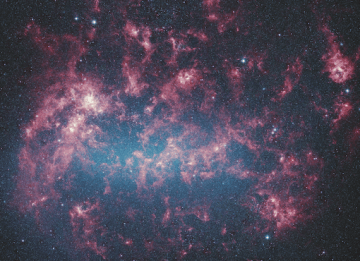Philip Ball in Prospect:
 Most of the Universe is missing and decades of searching have so far elicited no sign of it. For some scientists this is an embarrassment. For others it is a clue that might eventually push physics towards the next frontier of understanding. Either way, it is an odd situation.
Most of the Universe is missing and decades of searching have so far elicited no sign of it. For some scientists this is an embarrassment. For others it is a clue that might eventually push physics towards the next frontier of understanding. Either way, it is an odd situation.
Science has hunted in vain for the missing material. Its existence has never been detected directly, only inferred from hints. Yet if the rest of what we know about the way the cosmos is structured is right, it must be about five times more abundant than all the matter we can see in the Universe.
“Dark matter” is truly ghostly stuff. It is hidden far more profoundly than black holes, about which there was much excitement in April when a beautiful image of one was produced, showing a yellow-orange blob with a black void in the middle. Although, virtually by definition, we won’t ever truly “see” light-swallowing black holes, we can see their effects on the surrounding matter and space. More to the point, we are pretty sure we know what they are made from: ordinary matter, the stuff of stars.
Dark matter is something else entirely. And yet most scientists are agreed that this elusive material must exist: without it, they find it hard to see how we could be here at all. The gravitational pull that it exerts—the only impression it leaves on the visible Universe—is an essential ingredient for the formation of galaxies, stars and indeed planets like our own.
More here.
